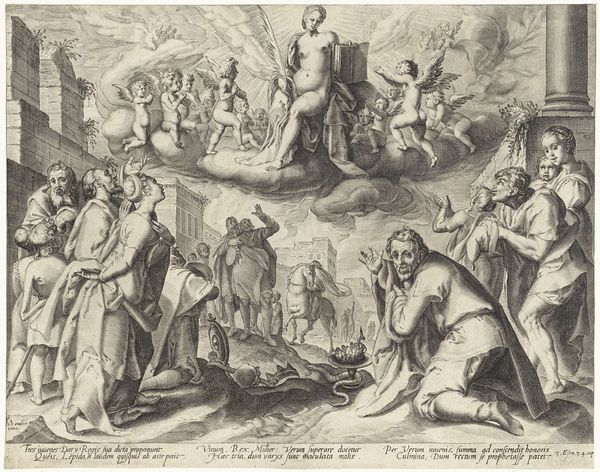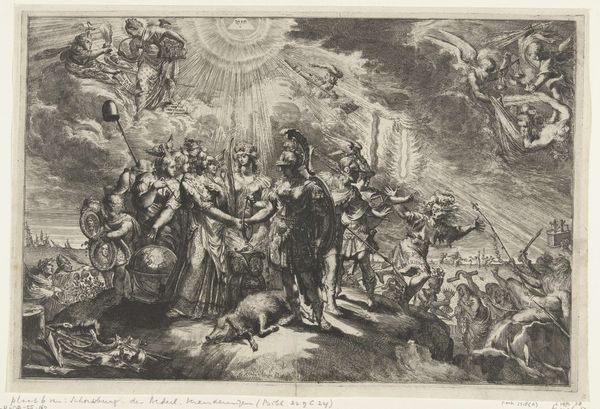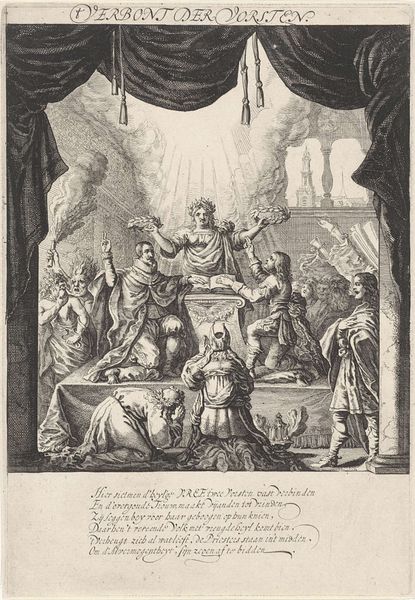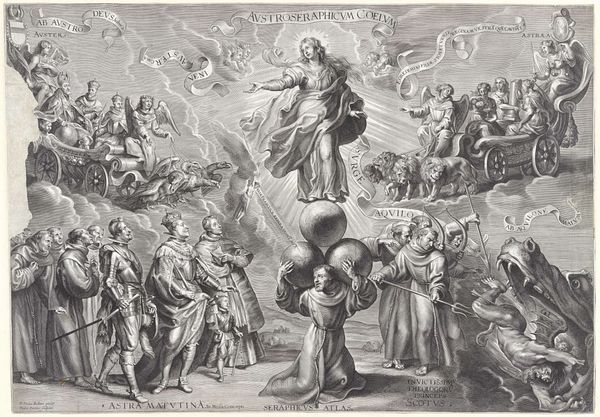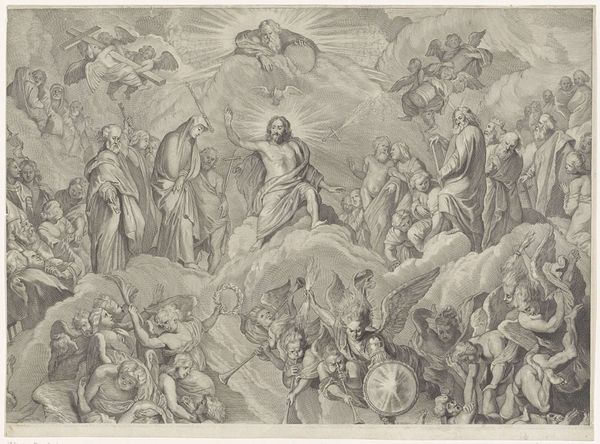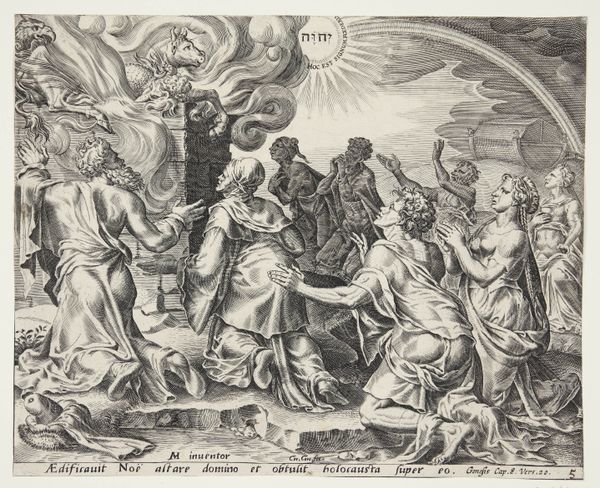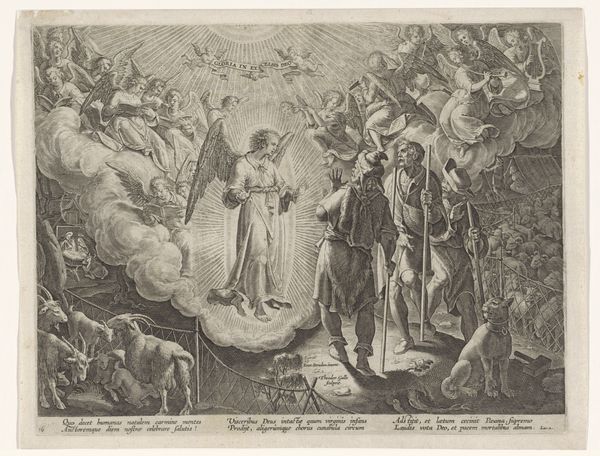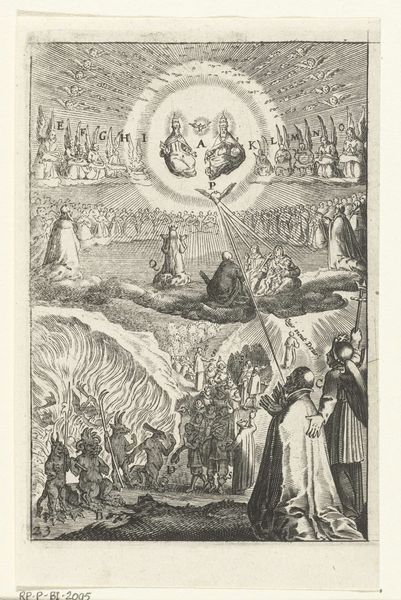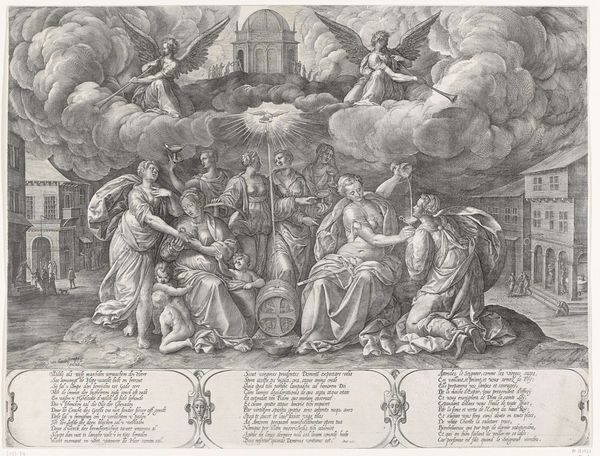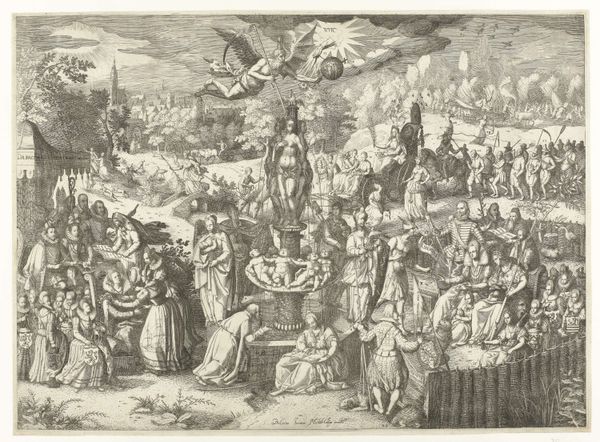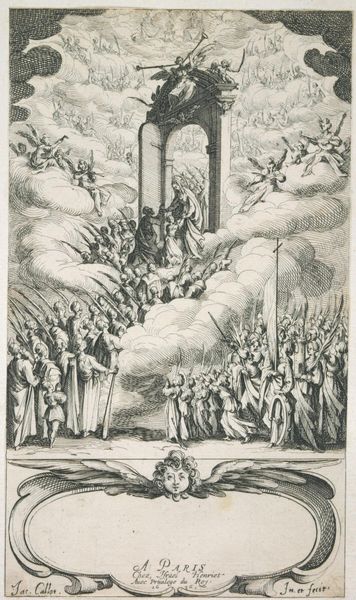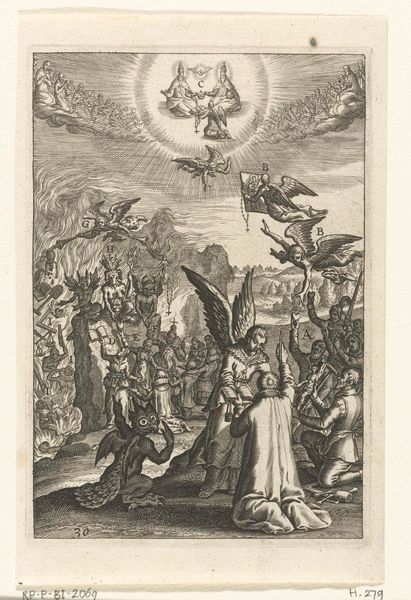
Het visioen van de Mensenzoon: Christus verschijnt aan de monarchen van de wereld
0:00
0:00
salomonsavery
Rijksmuseum
print, engraving
#
narrative-art
#
baroque
# print
#
figuration
#
history-painting
#
engraving
Dimensions: width 279 mm, height 229 mm
Copyright: Rijks Museum: Open Domain
This print, "The Vision of the Son of Man," was made by Salomon Savery in the 17th century. It is an etching, meaning the artist would have coated a metal plate with wax, drawn into the wax to expose the metal, and then bathed the plate in acid. The acid bites away the exposed lines, allowing them to hold ink. The relatively fine lines that Savery was able to achieve indicates the expertise he had with the printmaking process. The visual effect is one of great detail, from the figures' clothing to the radiant beams of light. The textures feel precise and controlled, but also show a remarkable amount of labor-intensive work to communicate a religious vision. Looking at this print, it’s hard not to consider the huge investment of time required to produce a single image, and how this relates to the message of divine power that Savery sought to communicate. By appreciating the means of production, we may better grasp the meaning of the final artwork.
Comments
No comments
Be the first to comment and join the conversation on the ultimate creative platform.
